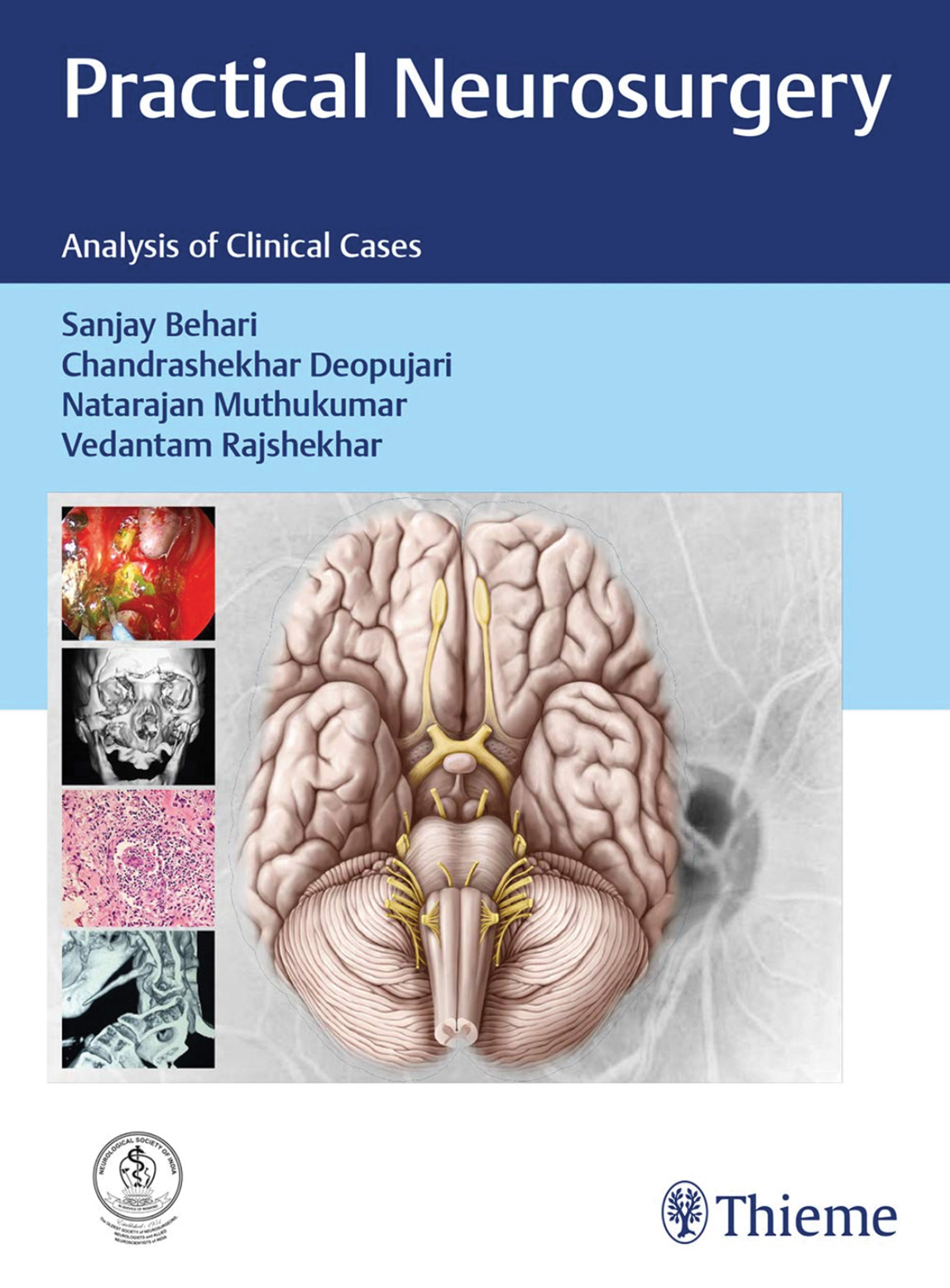With the changing face of modern hospital medicine and increasing demands on our time, education for surgical trainees has been driven towards easy access resources and small succinct handbooks, to provide us with quick answers on a given topic. As the authors of this book suggest in the preface, the skills of history and examination, exploratory ward round discussion and diagnostic reasoning has also been diminished due to time constraints. The authors aim to remedy this with their book by providing a ‘problem-solving approach’ to a broad spectrum of neurosurgical presentations, for example, ‘a patient with facial pain’. Targeted at junior trainees, this problem-solving approach aims to stimulate analysis of clinical scenarios and guide subsequent management of cases we may be confronted with on a day to day basis.
The book is divided into four sections – in (intra-)cranial, cranial nerves, neuroendocrine (and phacomatoses) and spine and brachial plexus. Traversing the four broad sections are 52 chapters covering a plethora of both neurosurgical and more general neurological presentations – a patient with anosmia, a child with precocious puberty, a patient with monoparesis and so forth. Despite the four overarching sections, there is some lack of cohesion between chapters; the style (and quality) varies over the course of the book.
The opening four chapters of the cranial section concern paediatric problems; a child with a large head, a child with ataxia and vomiting, a child with abnormal head shape and a child with a swelling on the forehead and increased distance between palpebral fissures. The opening chapter is a slow start, with repetition within the text and poor-quality images which do little to support the text. In the second chapter the image quality remains an issue, but you unexpectedly discover a relevant overview of paediatric posterior fossa brain tumours, with substantial supporting information in tabular form. The third and fourth chapters are shorter, with better image quality and more appeal for the visual learner. The chapters then progress to cover basic concepts of dementia, seizures and lobar signs suitable for junior trainees until we reach a disappointing Chapter 10, a patient with a sudden severe headache. This provides an unstimulating chapter with failure to highlight the importance of timing when performing a lumbar puncture in suspected subarachnoid haemorrhage and no guidance on clinical management, raising questions as to the target readership of the book.
The erratic first section settles down, however, to a steady stream in the next chapters. These provide well-judged explanations of essential neuroanatomy and appropriate use of diagrams. Many chapters conclude with further reading tips but these suggestions are rather varied in quantity and quality, and are sometimes omitted.
Chapter 13 commences the cranial nerves section, with simplified visual explanations of cranial nerve physiology and relevant pathology pertaining to each chapter title, with the exception of chapter 22 (a patient with a stiff neck – a simple-sounding title which leads to coverage of jugular foramen syndromes). A case-based style discussion is introduced in chapter 14, a patient with cerebellopontine angle syndrome. This chapter provides the reader with useful exam-style questioning. The latter half of this chapter is focused on surgical techniques, offering engagement and self-assessment for higher surgical trainees.
Chapters 25 to 30 cover neuroendocrine conditions and phacomatoses. This shortest section of the book is perhaps the easiest to read, with endocrine pathology being well-suited to the book’s format, and content matching well to each chapter title.
The final section is then the longest, covering spine and brachial plexus. It again contains a mixture of anticipated and hidden information within the chapters; the rather chaotic style of the first cranial chapters seems to creep back in. The latter part of this section includes some miscellaneous chapters. Some might have been better placed elsewhere (e.g. the patient with fundoscopic abnormality could have been placed in the cranial nerves section).
The majority of authors practice in India, as a result, certain pathologies are given more weight than if written from UK institutions. However the authors have done well to make this engaging and applicable to all neurosurgical trainees. With a few exceptions, the chapters provide information for all stages of training.
This is not a standalone book for trainees and will not supersede volumes such as Greenberg’s or Samadouras, which provide quick delivery of information. But as laid out within its preface, it does not try to. Once familiar with the leisurely pace, and the use of repetition, it can provide pleasant (perhaps passive) revision from being picked up to read individual chapters.
